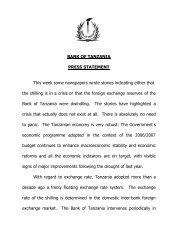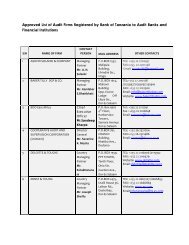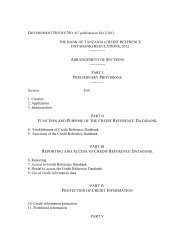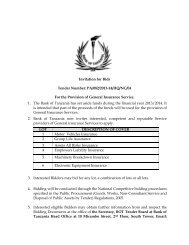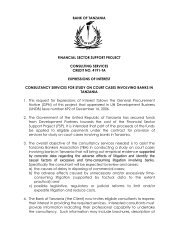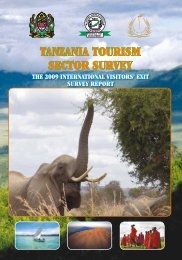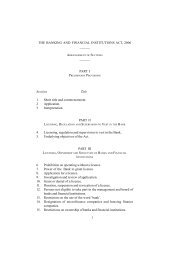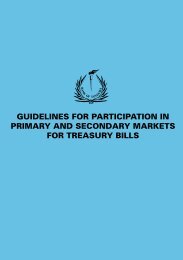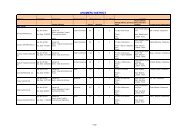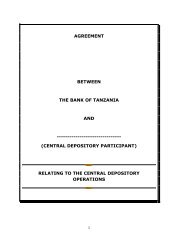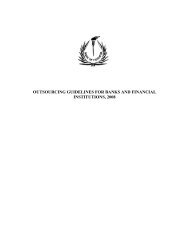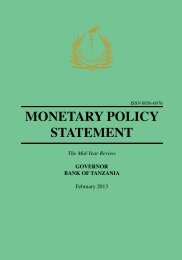TANZANIA TOURISM SECTOR SURVEY - Bank of Tanzania
TANZANIA TOURISM SECTOR SURVEY - Bank of Tanzania
TANZANIA TOURISM SECTOR SURVEY - Bank of Tanzania
- No tags were found...
Create successful ePaper yourself
Turn your PDF publications into a flip-book with our unique Google optimized e-Paper software.
The major tourist attractions in Zanzibar are the sandy beaches and the historicalsites. As observed in the previous surveys, Italy continued to take the lead by bringingabout 27 percent <strong>of</strong> the visitors, followed by the United States <strong>of</strong> America (10 percent)and South Africa (9 percent) as shown in Table 2.1(b). The significance <strong>of</strong> the Italianmarket is largely associated with the existing Italian hotel establishments in Zanzibarcoupled with direct chartered flights from Italy. Likewise, the increase <strong>of</strong> the visitorsfrom South Africa is largely explained by the launching <strong>of</strong> ONE TIME AIR, whichflies directly from South Africa to the island three times a week. It is worth notingthat, the United Arab Emirates also appeared in the top fifteen source markets partlydue to the participation <strong>of</strong> Zanzibar in the Arab Travel Market (ATM), which takesplace in Dubai.2.2 Travel ArrangementChart 2.1: Travel ArrangementSurvey results depict that 56.2 percent <strong>of</strong> the all the visitors travelled under nonpackagetour and 43.8 percent came by the package tour arrangement (Chart 2.1).These results differ from the outcome <strong>of</strong> the previous surveys, where package tourhas been the most preferred travel arrangement. The change in the pattern <strong>of</strong> tourarrangement during this survey is partly explained by seasonality as the survey wasconducted during the mini-peak tourist season. It is worth mentioning that, most <strong>of</strong>the package tour visitors do not prefer to travel during the festive season (Christmasand New Year). The global financial crisis which started in the mid-2008 might havealso influenced the shift in the travel arrangement/pattern as it has been establishedthat during the time <strong>of</strong> crises, segments such as repeat visitors, special interest as wellas independent travellers and visiting friends and relatives, are assumed to be moreresilient 2 . This fact is evidenced by the increase in the proportion <strong>of</strong> tourists visitingfriends and relatives from 5.4 percent in 2007 to 15.3 percent in 2008 Survey.2UNWTO World Tourism Barometer, Vol. 7 No.1, January 2009.7



